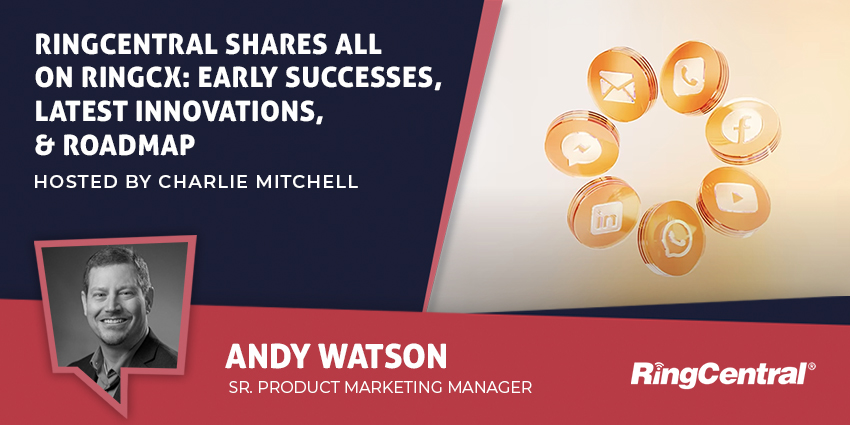Combining UCaaS/CCaaS solutions, and consolidating cloud technologies isn’t just a trend in today’s world. It’s quickly becoming a crucial component of any solid strategy for digital transformation.
Cloud adoption has skyrocketed in recent years, as companies search for ways to preserve business continuity and improve workplace agility. The “Everything as a Service” space is now larger than ever. By 2031, it’s expected to reach a value of $2,631.1 billion, as organizations embrace a more unified cloud architecture.
Vendors offering combined UCaaS/CCaaS platforms empower business leaders to take the next step in the transformation of their technology stacks. They bridge the gaps between different essential communication tools, improve collaboration, and boost productivity.
The question is, how do companies choose the right solution for their needs? Here’s your complete guide to comparing UCaaS/CCaaS vendors this year.
Step 1: Examine Your Existing UCaaS/CCaaS Stack
Consolidating your UCaaS and CCaaS tools in today’s digital world doesn’t have to mean starting again from scratch. Most businesses will already have tools they rely on for customer service and internal collaboration. Some UCaaS/CCaaS providers will empower these organizations to continue using their existing resources, alongside new tools.
For instance, if you already use Microsoft Teams for internal collaboration, you may choose to implement a CCaaS solution into Teams using Operator Connect or Direct Routing. If you want to start over with a new UCaaS/CCaaS system, the right vendor should allow you to continue using crucial apps and hardware. They may offer API and integration options where necessary.
Some vendors also take an agnostic approach to UCaaS and CCaaS platform consolidation, allowing companies to connect as many different tools as they like to a network.
Step 2: Identify Crucial Tools and Features
As the demand for integrated UCaaS/CCaaS solutions continues to grow, the number of different platforms and diverse tools is evolving. Today’s businesses can access everything from tools focused heavily on collaboration, with a few contact center features, to highly advanced ecosystems.
Identifying the features most crucial to your business will help you to choose a vendor that’s suitable for your needs. You may need to think about the global reach of your platform, and whether you can serve employees and customers in a range of different countries.
Some companies might be looking for tools that implement solutions for more flexible working practices, like remote provisioning and configuration features. You may even want to take advantage of more advanced innovations in the UCaaS/CCaaS world, like generative AI and low-code automation tools.
When considering your feature needs, ensure you think not just about the capabilities you need now, but the innovations you may want to take advantage of in the years ahead.
Step 3: Prioritize Flexibility and Integrations
Combining your UCaaS/CCaaS solutions in the cloud is an excellent way to simplify the technology stack. It ensures you can access complete visibility into your communication tools, manage data more efficiently, and improve employee productivity.
However, the chances are your team members also rely on more than just contact center and collaboration tools. The most advanced UCaaS/CCaaS solutions won’t just combine two ecosystems. They’ll also give you the freedom to connect other resources and tools to the same single pane of glass environment.
With a flexible platform, you’ll be able to integrate your UCaaS/CCaaS technology with various apps. This could include workforce management and optimization tools, customer journey mapping platforms and CRMs. The more integrations you can access, the more you can empower teams.
At the very least, your platform should allow users to communicate with both colleagues and customers across a range of channels and platforms.
Step 4: Remember UCaaS/CCaaS Security and Compliance
Aligning UCaaS and CCaaS solutions in one ecosystem can be a fantastic way to improve compliance and protect your business data.
However, depending on your industry, and the regulations you need to adhere to, it may be important to choose a platform with more advanced security and privacy features. Some of the top vendors on the market can offer access to automated tools, which monitor instances of non-compliance. They can help with recording important data across channels, and securing conversations.
Some solutions can even allow companies to automatically redact information from documents and transcriptions. Or they can include access to advanced data sovereignty tools, to ensure you have full control over where information is stored. At a minimum, these platforms should always feature comprehensive tools for access control and encryption.
Step 5: Ensure Excellent User Experiences
One of the biggest benefits of bringing UCaaS and CCaaS platforms together, is the ability to improve experiences of both customers and employees. With fewer distributed platforms and apps to navigate, employees can work more productively and efficiently. This helps to reduce average handling times and improve customer satisfaction.
However, some platforms can be more complex than others. To ensure rapid adoption, companies should prioritize platforms that offer straightforward and customizable interfaces. Teams should be able to configure their platforms to suit their specific needs, with easy drag-and-drop tools.
Business leaders should be able to automate tasks quickly, such as data retrieval and storage, to reduce the repetitive work employees need to do. Plus, companies should be able to configure, provision, and manage access to various tools from one unified platform.
Step 6: Make Sure You Can Innovate
Finally, as UCaaS and CCaaS platforms evolve, the right solution should ensure you can take advantage of the most disruptive technology. Innovative UCaaS/CCaaS vendors will empower business leaders to implement robust tools into their entire communication ecosystem.
This could mean providing access to chatbot and virtual assistant builders with LLM technology. This would allow companies to create both chatbots for customers, and virtual assistants for agents in seconds. It could also mean offering access to advanced analytical tools, workflow automation features, and APIs.
Looking for a scalable platform with plenty of opportunities for growth and development is essential. The best vendors will even offer step-by-step guidance and support, to help you make the most of your new technology.
Comparing UCaaS/CCaaS Platforms
Demand for consolidation, simplicity, and scalability is driving the adoption of UCaaS/CCaaS platforms at an accelerated rate. As companies continue to shift more of their ecosystems into the cloud, unified platforms are growing increasingly popular.
With the steps above, you’ll be able to ensure you can choose a platform that serves your needs for years to come.







